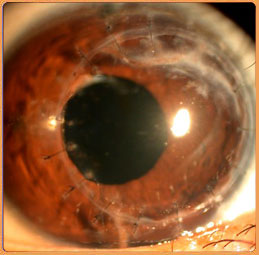- Home
- About Us
- Meet Our Team
- Facilities
- Services
- Expertise
- Anterior Lamellar Transplants
- Artificial Cornea
- Cataract Surgery In Children
- Complex Cataract Surgeries
- Corneal Infections
- Corneal Transplants In Children
- Dry Eye Disorders
- Keratoconus
- Lasik And Refractive Surgery
- Ocular Allergies
- Ocular Inflammation
- Ocular Surface Reconstruction
- Pterygium Management
- Secondary Iol Implants
- Sutureless Corneal Transplants
- Patient Information
- Academics
- Darshan Activites
- Contact Us
CORNEAL TRANSPLANTS IN CHILDREN
The cornea has a layered structure and is composed of the epithelium with its basement membrane on the top, and the endothelium with the Descemet’s membrane on the bottom. The rest of the corneal stroma – which is present between these 2 layers – constitutes 90% of the corneal thickness and is composed of sheets of collagen arranged in a precise manner.
The principal function of the cornea is to transmit visible light into the eye. By virtue of its regular curvature, it also assists in focusing the incoming rays of light, such that they reach the retina in a coordinated manner. Many diseases can affect these functions of the cornea.
Conditions that affect the cornea can also occur in children. These include developmental abnormalities, tears in the Descemet’s membrane during delivery or due to increased intraocular pressure, ulcers, metabolic conditions, trauma, genetic defects in the endothelium, and the presence of abnormal tissues on the cornea.
Corneal damage in children assumes great significance since it can affect the normal development of the child’s eye and visual system. Failure to correct the condition at an early stage can result in a condition termed “amblyopia” or “lazy eye” – which is hard to treat at a later date.
Assessment of the location, type and functional significance of the corneal opacity in a child is extremely important and may require examination under anesthesia in very small children. Surgery to replace the corneal tissues is technically more challenging in these small eyes, but if performed well, can result in good visual function.
Corneal scar + cataract
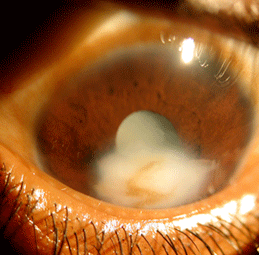
coreneal surgery in a child
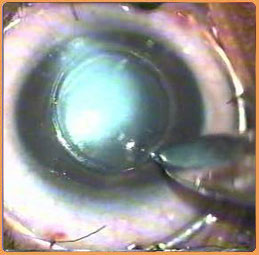
one day after surgery
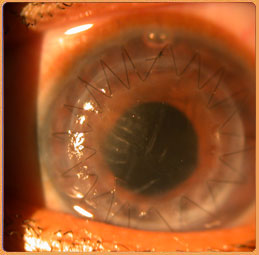
one day after surgery
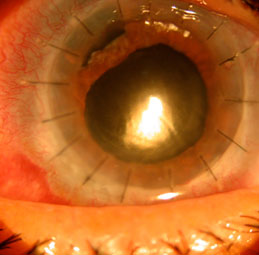
Failed corneal graft
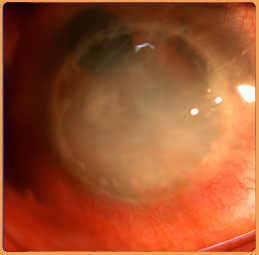
Rotational graft for eccentric opacity
